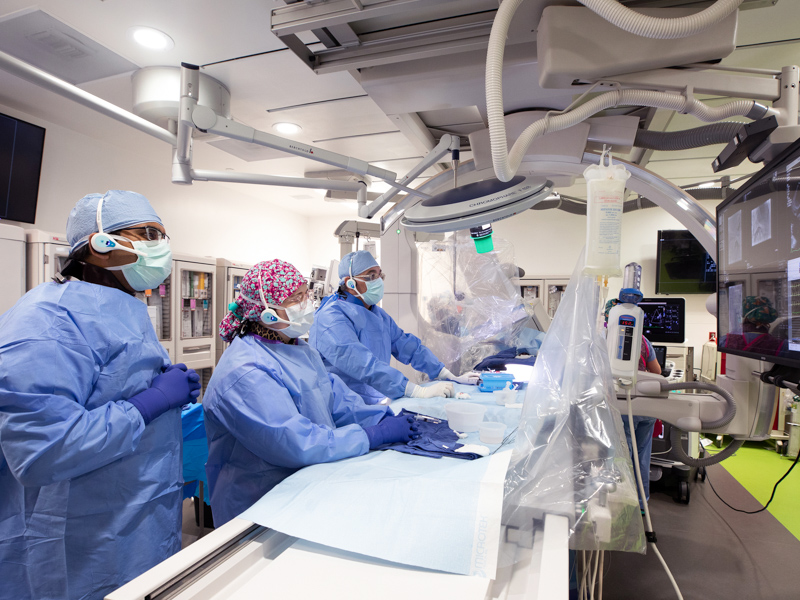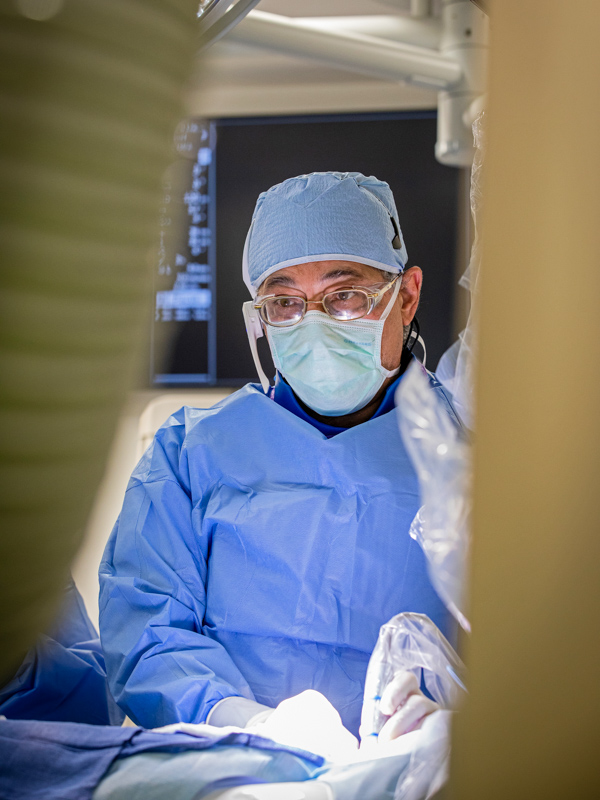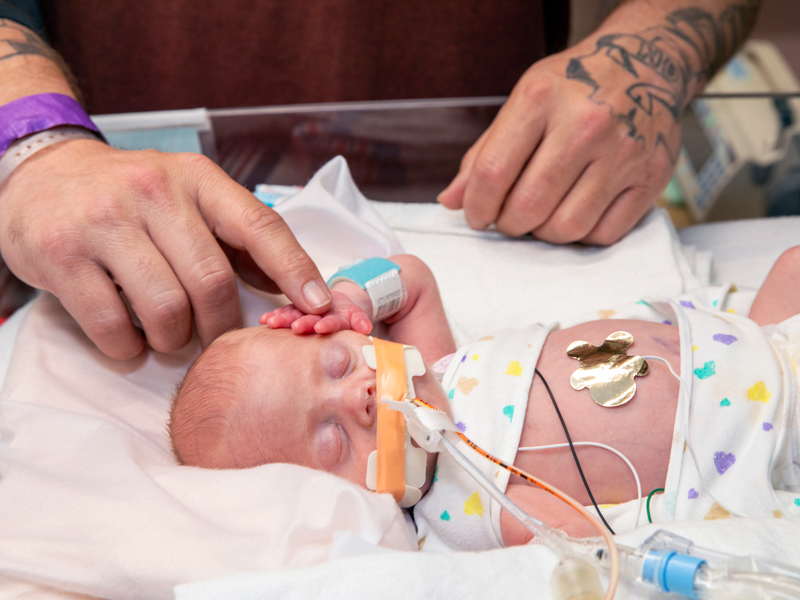Larger catheterization lab serving the smallest patients at Children’s of Mississippi

A new larger and more technologically advanced catheterization laboratory at Children’s of Mississippi is allowing the children’s hospital’s smallest patients to get the cardiac diagnostic care and treatment they need.
A pediatric heart catheterization involves inserting a long, flexible tube inside a child’s blood vessel and guiding it to the heart to diagnose or treat heart conditions.

Opened in late 2021, the new lab is greatly advancing patient care, said Dr. Makram Ebeid, director of pediatric interventional cardiology and the pediatric catheterization lab.
“This is true especially for our youngest, smallest patients,” he said. “We are equipped to provide care to babies as small as 700 grams, or 1.5 pounds. We also have the most advanced imaging equipment, which makes catheterizations faster, easier and more accurate.”
The additional space of the new lab, part of the Children’s Heart Center at Children’s of Mississippi's Kathy and Joe Sanderson Tower, means that there’s room for more care team members and equipment as well as medical students, residents and fellows.
The lab plus private neonatal intensive care rooms where parents can stay with their newborns has been a help to Sammy Garrett of Baldwin, a newborn who underwent a correction of patent ductus arteriosus, or PDA, through catheterization in the new lab.
Treating PDA, a condition that happens when the opening between two major blood vessels leading from the heart doesn’t close as it should shortly after birth, through catheterization is much less invasive than surgery.

“Everyone has been great to us here,” said his father, Jason Bedell. “They gave me a pamphlet at the NICU that said, ‘Small and mighty – NICU strong,’ and that’s Sammy. We’re looking forward to coming home.”
The improved pediatric cath lab “is definitely a change for the better,” said Dr. Mobolaji Famuyide, chief of newborn medicine at the University of Mississippi Medical Center.
Catheterizations are used in diagnosing and treating congenital heart conditions. About one baby in every 100 has a congenital heart defect, or CHD, the most common type of birth defect. These can range from mild to critical.
“We have had multiple babies come from across the state (for catheterization) and for the most part, they are able to return to their institution within 72 to 96 hours,” Famuyide said, “Our team has worked well with Dr. Ebeid and the Children’s Heart Center team to identify appropriate patients for that procedure.”
Treating PDA through catheterization has been such a success that the Children’s of Mississippi experience is being shared with other children’s cardiac programs, Ebeid said.
“Because of our experience here in Mississippi, I am often asked to teach pediatric catheterization programs in other states how this procedure can be performed on these tiny babies safely and effectively.”


